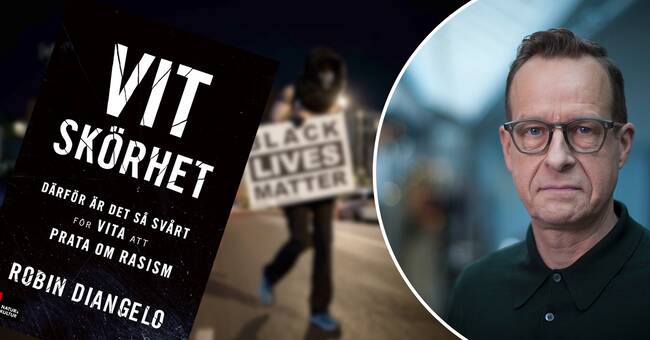One should be careful about importing analyzes from the USA into the Swedish debate.
Although the dominant and normative majority group - that is, whiteness - has quite similarities, the history of Swedish racism and segregation is completely different from that of the United States.
If you just keep that question alive during the reading, however, it is amazing how relevant these two specifically American books are in the Swedish context.
"White tenderness" better translation
White Fragility is the book in which sociologist and educator Robin DiAngelo develops his own concept of "white fragility", which describes common white defense reactions that make it more difficult to discuss and counter racism.
I think "white tenderness" would have been a better translation;
"Fragility" tends to evoke compassion and that is certainly not what DiAngelo is looking for with this tragicomically toxic concept.
Rather irritation over white hurt feelings that steal focus from the real issue.
It's about attitudes of distancing oneself from racism - "I'm not a racist, how can you believe it!"
- which in practice becomes a distancing from talking about racism at all.
When a white person says "I do not pay attention to skin color or race", this acts as a denial of the very existence and reality of racism.
The white fragility and the alleged color blindness in fact make it impossible to identify the functions of racism and to combat them.
These two attitudes, according to DiAngelo, are central components of the "racism without racists" that developed in the United States after the victories of the civil rights movement in the 1960s.
Sharp and thought-provoking
In other words, a stable social system of reaction and behavior patterns that systematically makes life more difficult for those who do not belong to the white group.
And that continues to work, continues to deliver privileges to whites and disadvantages to non-whites, even though no one openly defends it.
A racism without racists is a more sophisticated system, more difficult to understand and counteract.
Here, the relevance of the Swedish social analysis is obvious.
But in Sweden we have it a bit worse: a racism without racists, but also without race.
We lack accepted and of all accepted concepts for the groups in the Swedish people who are exposed to discrimination and racism (and different variants of the immigrant concept is not a good way to label parts of the country's permanent, native population).
Robin DiAngelo's core analysis is sharp, thought - provoking and it sends explosively meaningful impulses into the Swedish debate: if you refuse to see race, you cannot see racism.
I do not think that the concept of race will reappear in contemporary Swedish, but we must develop some kind of word to describe those who are exposed to racism, otherwise it is difficult to talk about racism.
Ibram X Kendi shares DiAngelo's basic analysis
The second book is How to Become an Anti-Racist by History Professor Ibram X Kendi.
A younger (born -82) black intellectual depiction of the upbringing and development of racism and racial identity as the inevitable center.
A strong literary story with razor-sharp thinking, which largely shares basic analysis with DiAngelo.
The opposite of racist is not non-racist, writes Kendi, it is anti-racist - because racism is something dynamic, a force that acts in society.
It can only be met with a counterforce, not by standing aside.

